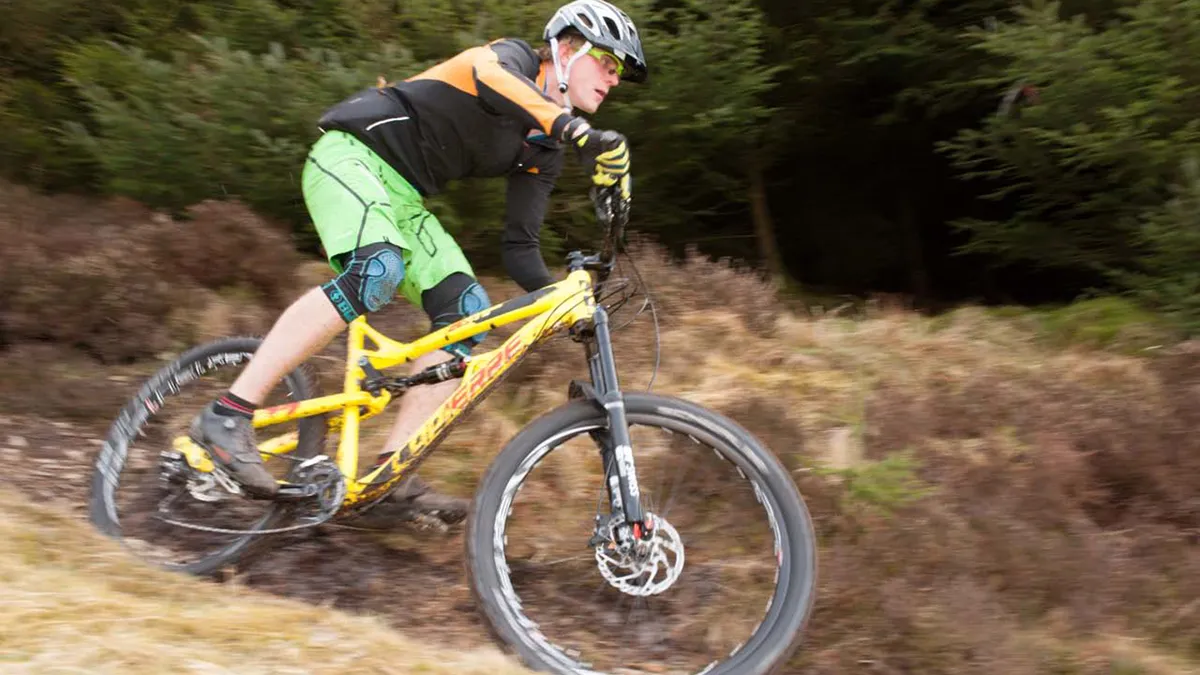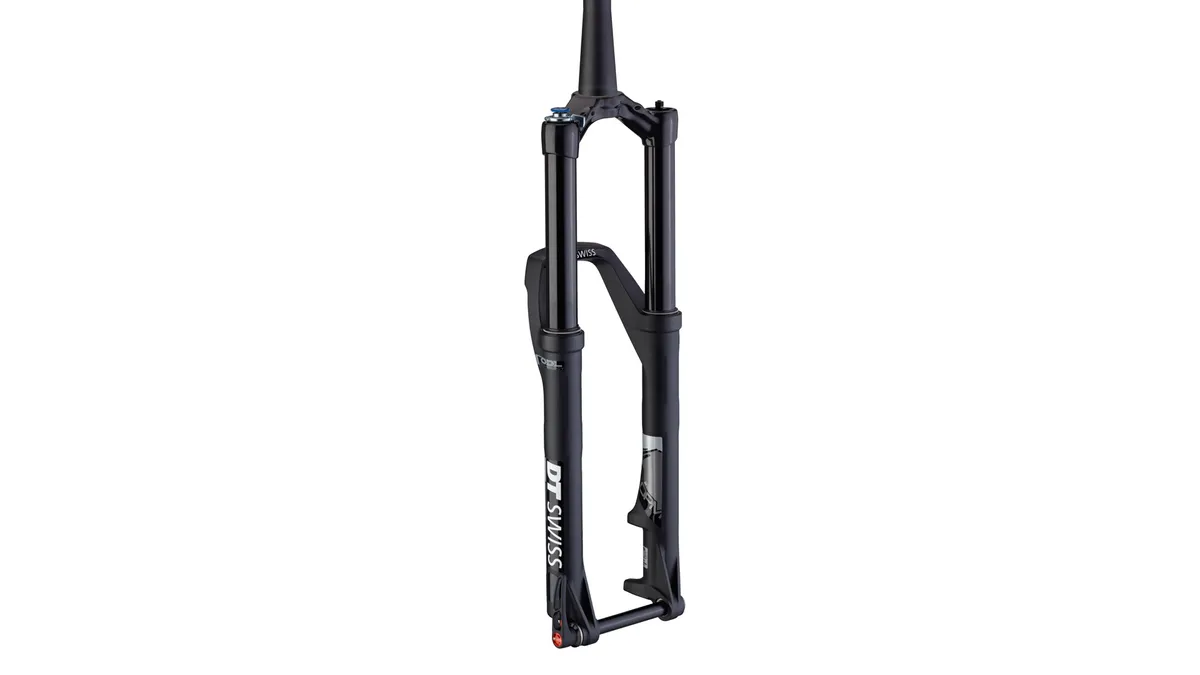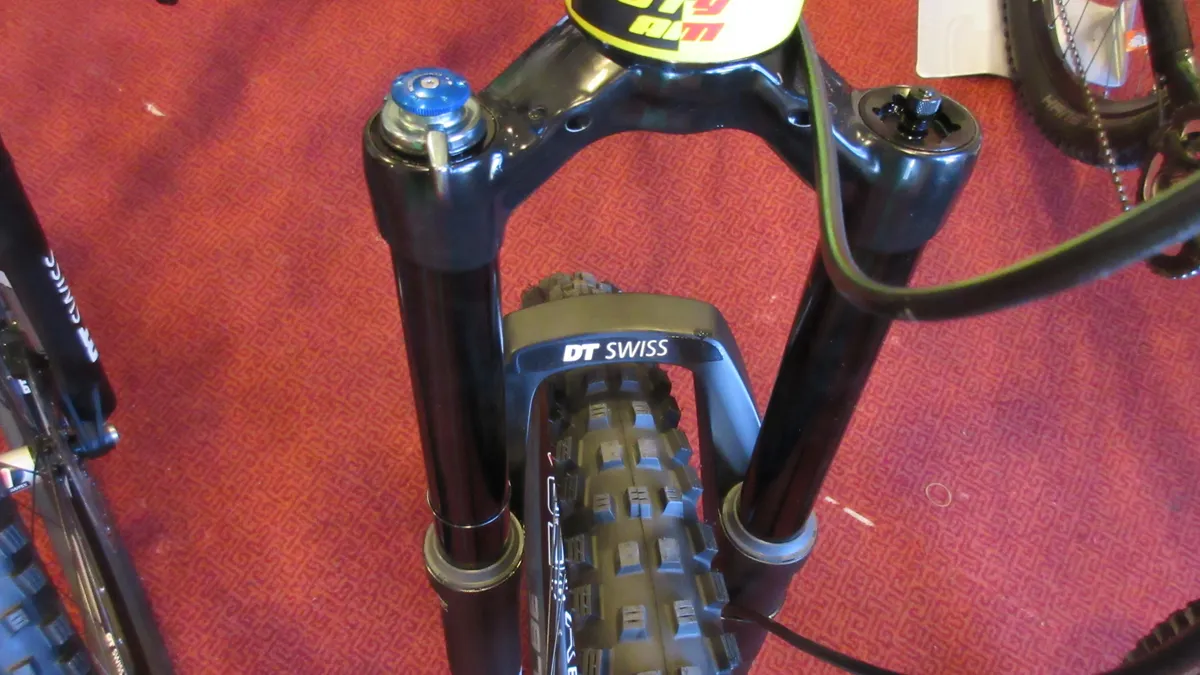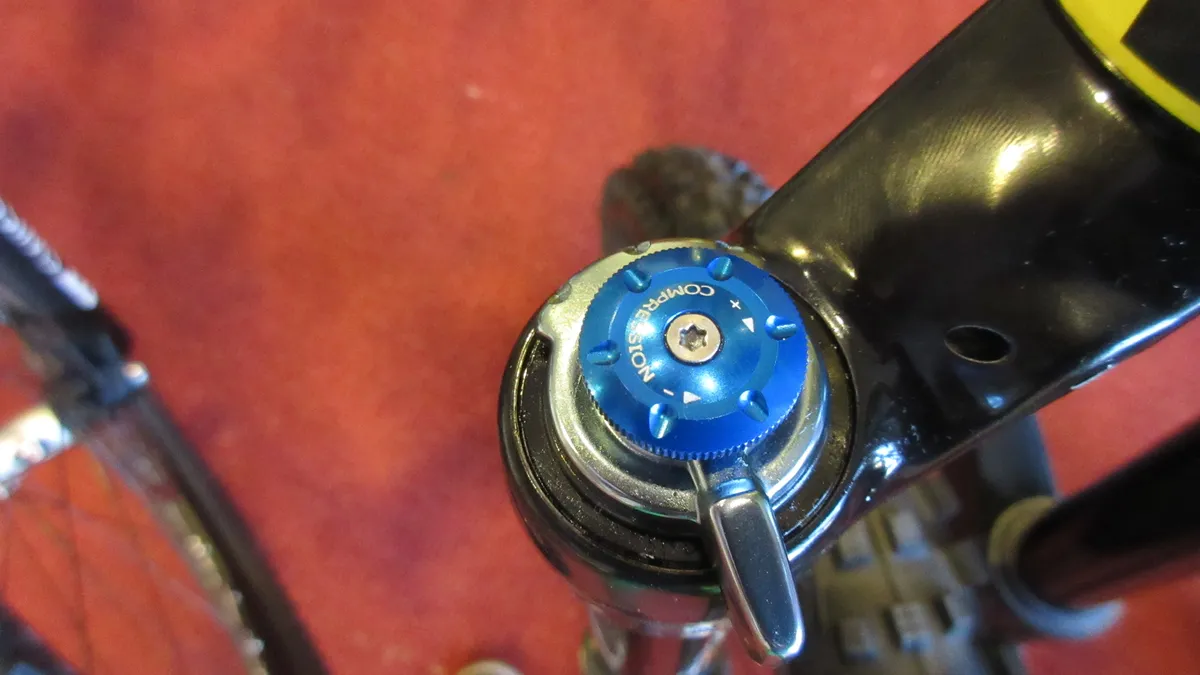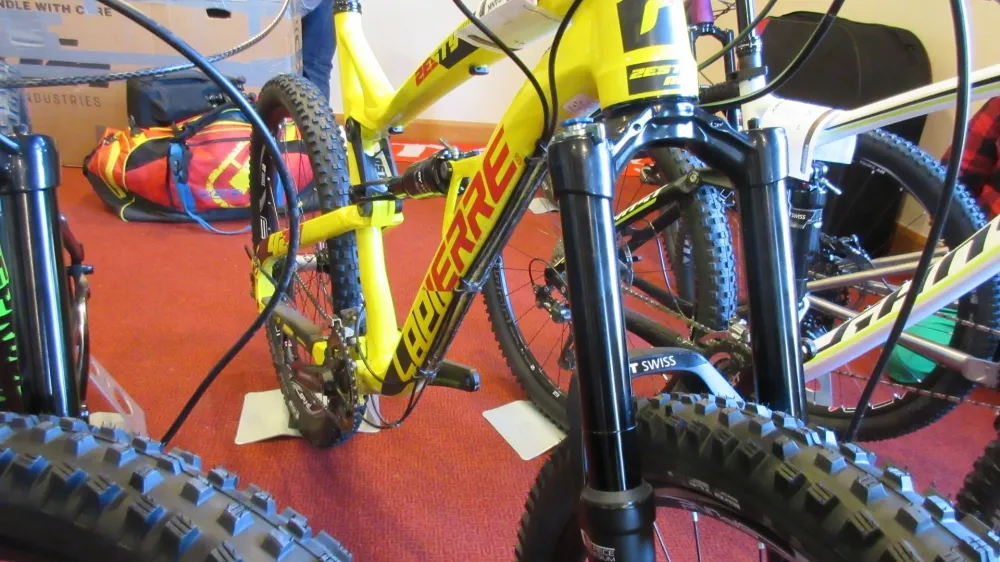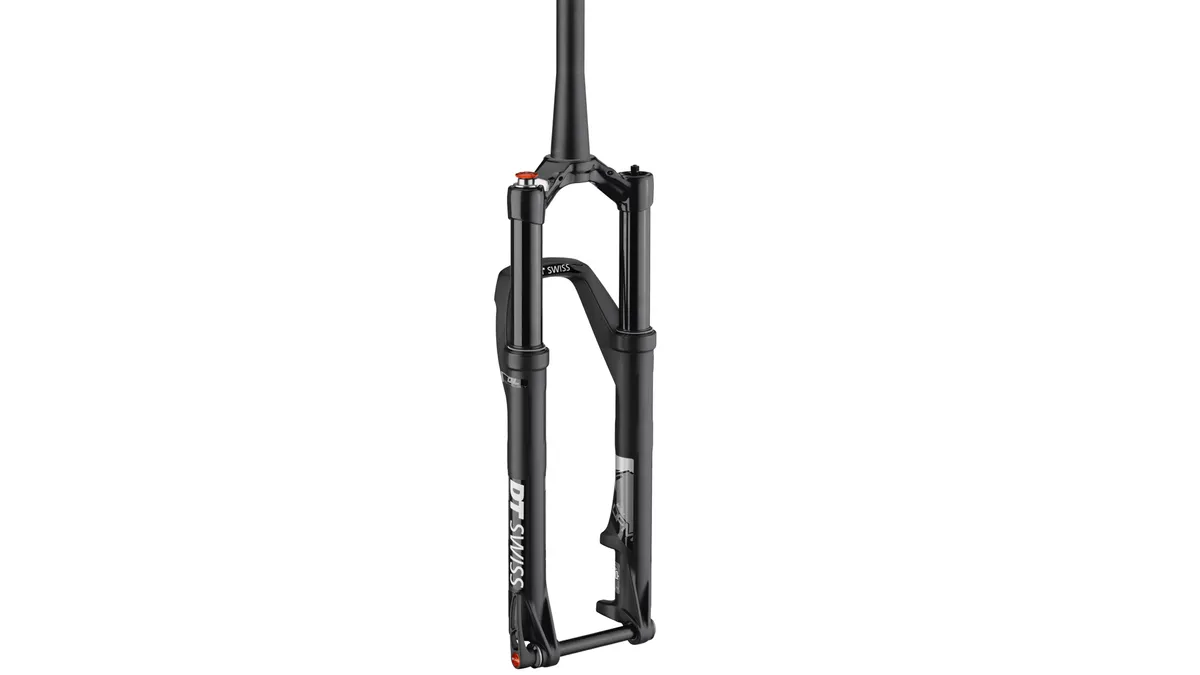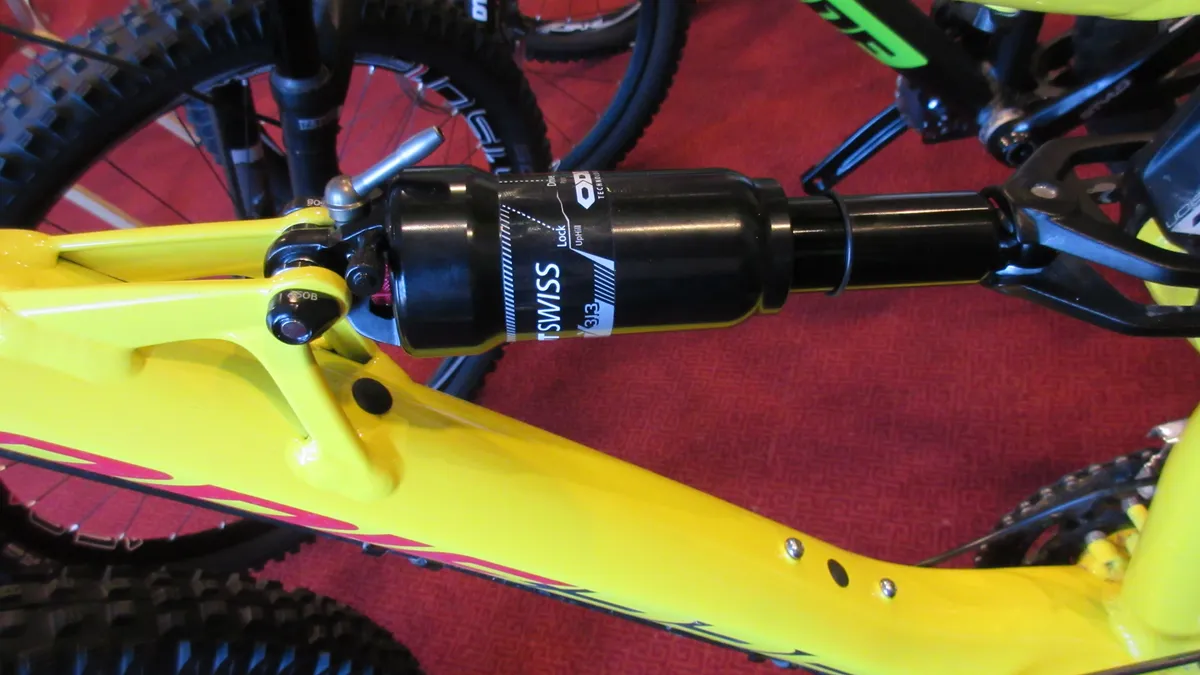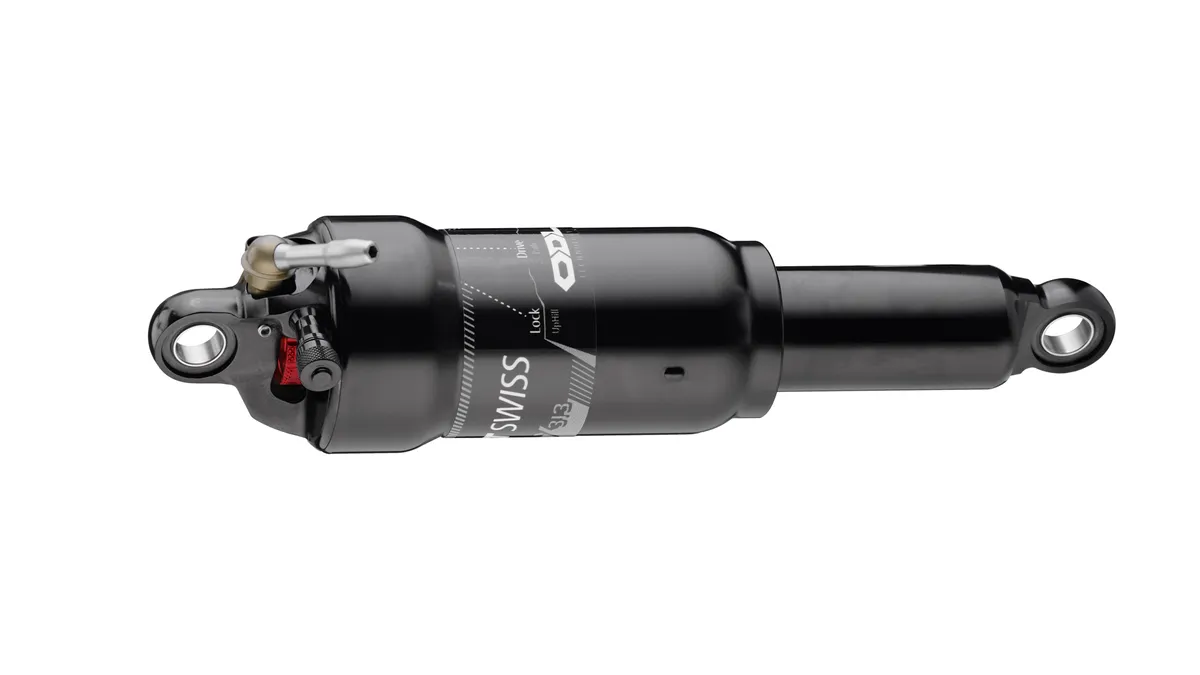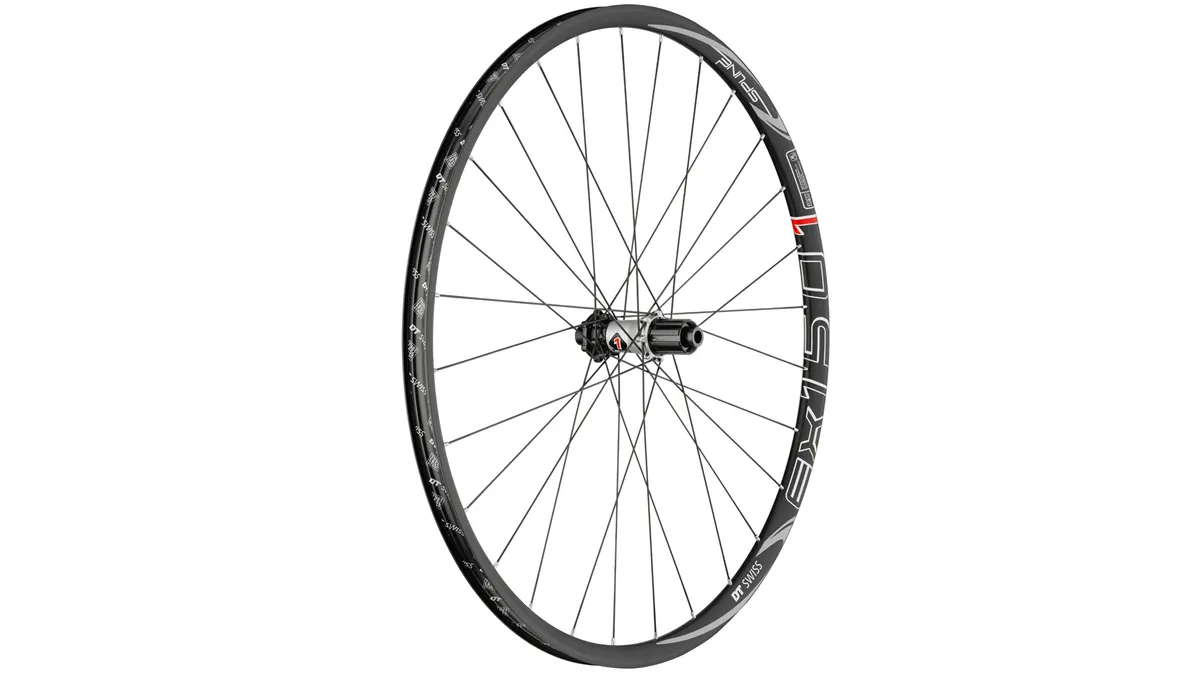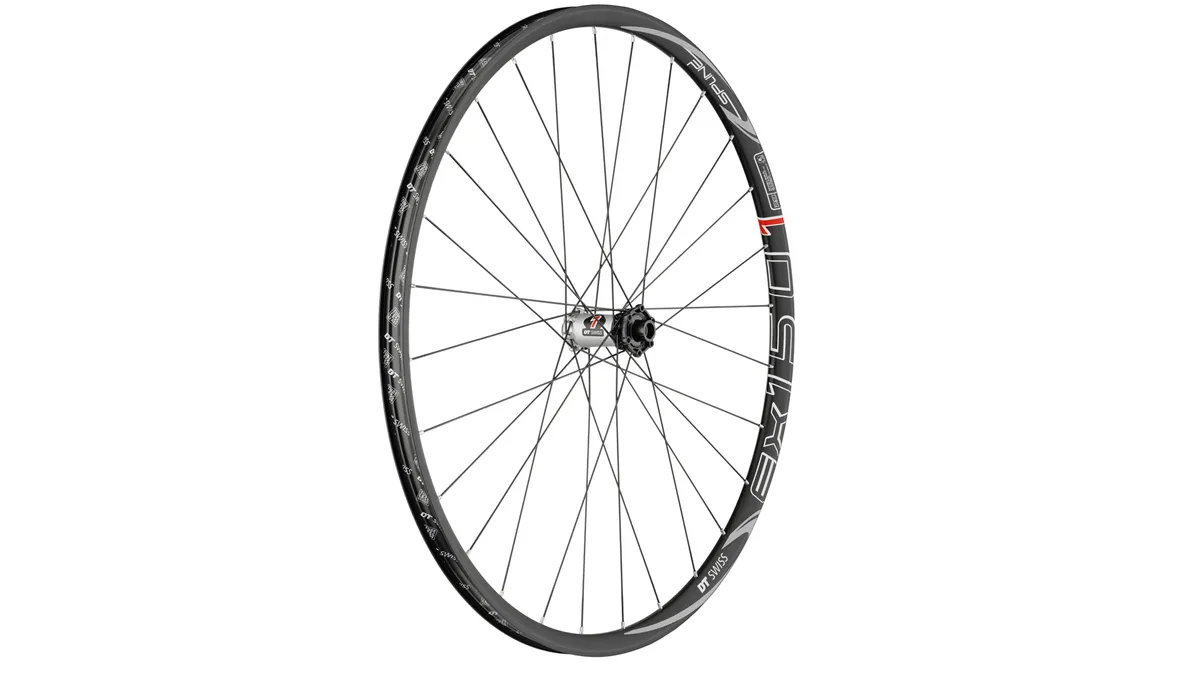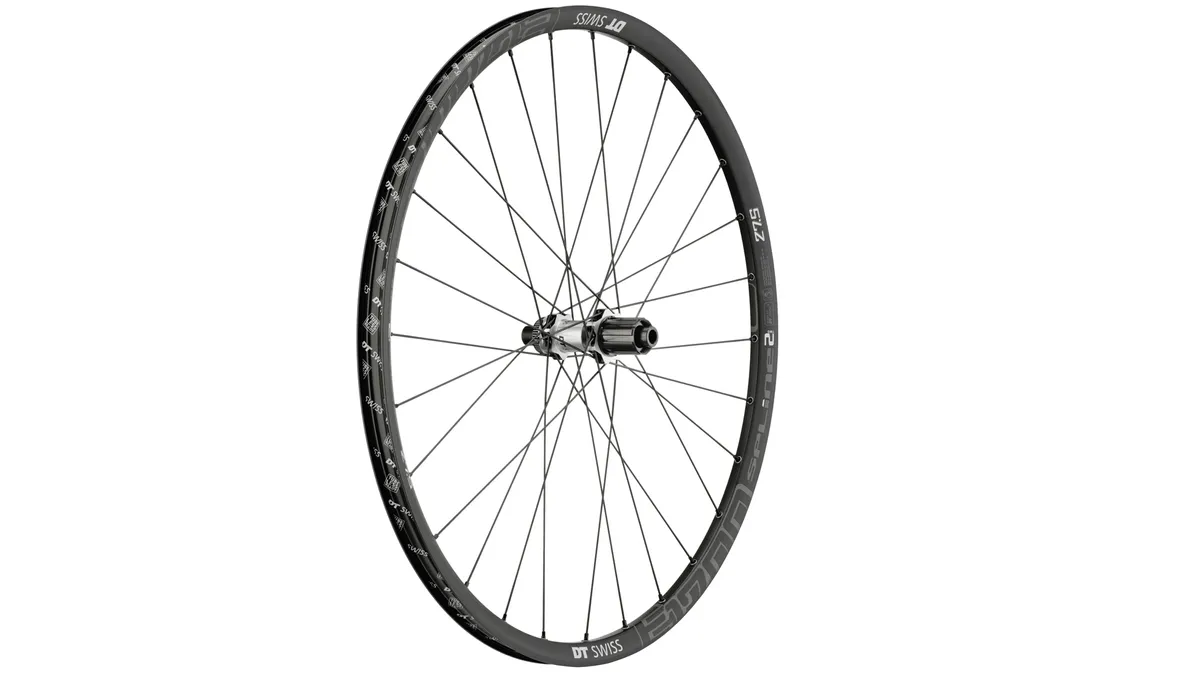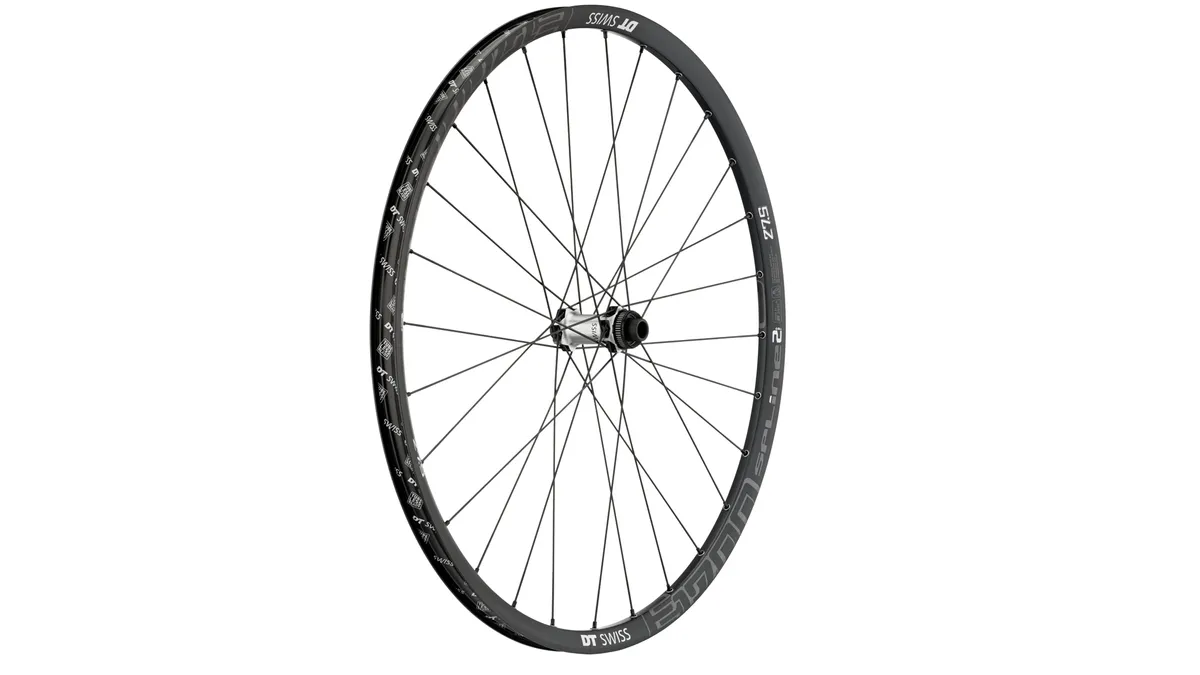DT Swiss, and its UK distributor, Hotlines, invited BikeRadar out to sunny Scotland to sample some wares, namely a new fork, shock, and wheelset. In the now famous Tweed Valley, we were given the chance to try out the new gear on some of the technical trails that made up the Scottish round of the Enduro World Series. We were also privy to some tantalising hints as to the future plans of the company.
OPM fork
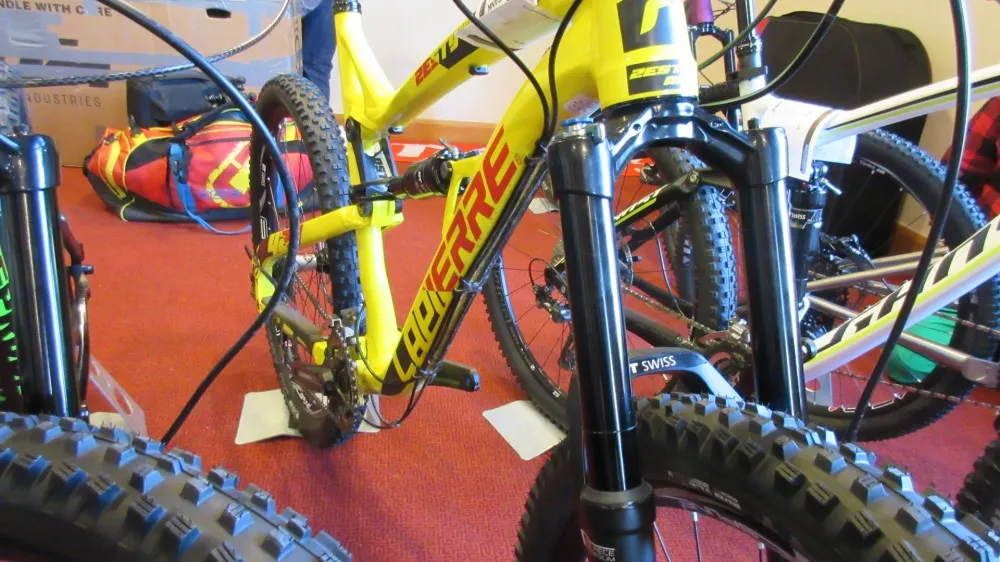
Available with 100-150mm travel, the OPM is designed to cater for the XC/trail/all-mountain expanse of the MTB spectrum. The 'E word' is not to be used here! The ODL model (£750) offers the now familiar trio of preset platform modes – here given the names Open, Drive, and Lock. The open mode can be fine-tuned via a low-speed compression adjuster, offering 20 clicks to play with. The locked-out mode is a full-on, no-nonsense lock for maximum efficiency, while the Drive mode that sits between the two offers a firm platform that still allows a little movement. An OL version is available (£530) that lacks both the intermediate setting and the fine-tuning of the Open mode.
The 32mm stanchions, 15mm axle and one-piece magnesium lower are designed to impart enough stiffness for all-mountain riding, while keeping the claimed weight at a potentially impressive 1620g (100mm travel 29er). SKF wiper seals are intended to reduce friction and increase longevity too.
On the trail, the fork was noticeably supple over small bumps, with a usefully progressive air spring that handled larger hits without excessive bottom-out. The Lock predictably mode gave a completely rigid feel, while the Drive option added some of this efficiency without being excessively jarring. In the open mode, the compression adjuster allowed a good balance of support and sensitivity to be found (six clicks from open for our 85kg tester). On our short test ride, we could detect no significant bushing-bind or flex from our 150mm-travel, 650b sample. A full review would be required to determine how the performance of the OPM compares with its competitors, but its showing on this test ride was certainly promising.
X 313 shock
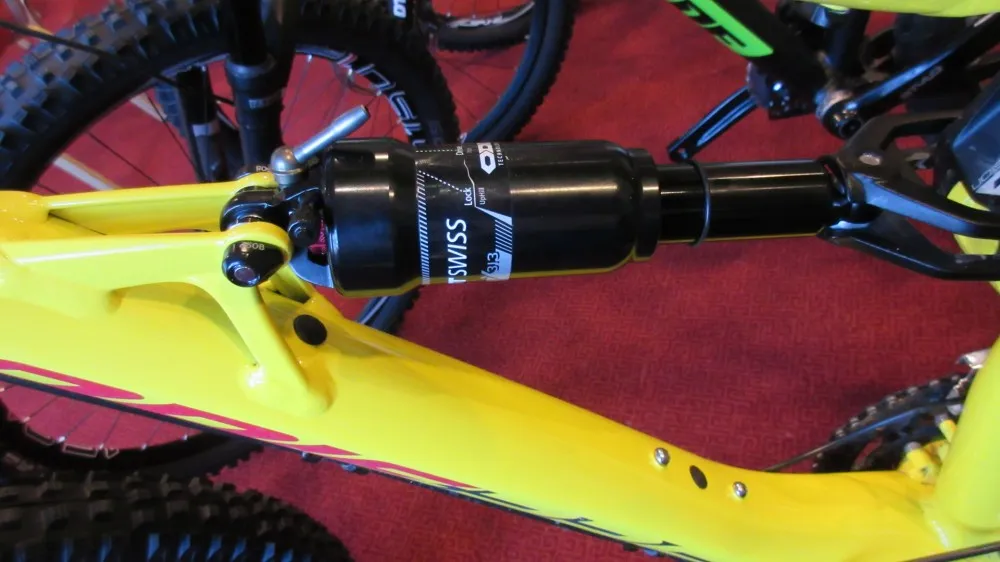
The OPM fork was paired with the X 313 ODL shock. The ODL has the same meaning here: three preset platforms can be selected via a leaver on the air-can. There is no fine-tuning compression dial on the shock, however. The ODL shock is available with or without a bar mounted remote, with the two options retailing for £360 and £320 respectively.
On the trail, the lockout mode did just as it said on the tin: providing maximum efficiency for smooth surfaces only. The Drive mode offered an efficient platform, opening up just enough to make it a good option for technical climbs and pedal-intensive singletrack. We stuck with this setting for the majority of off-road climbing. In the open mode, the shock was very lightly damped, but the highly progressive air can matched the fork well, and prevented bottom-out on all but the biggest hits of the day.
Spline wheels
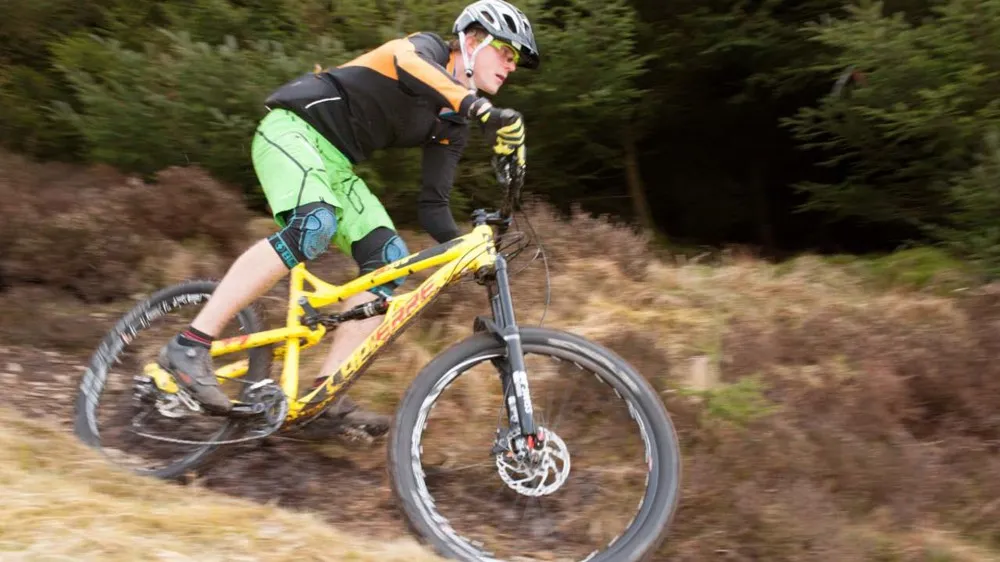
We also got to sample DT’s Spline 1 wheelset. The freehub features DT’s ratchet drive system, offering 36 points of engagement; 28 straight-pull double-butted spokes lace these to rim, which is available in three forms – the XM, XR, and EX – which sport 20, 22.5, and 25mm internal widths respectively. All are available in 26in, 27.5in and 29in diameters.
Interestingly, DT claimed that the 25mm Spline EX rim is the same as that used by Aaron Gwin in his infamous race run in Leogang, Austria, in which his tyre came off the rim and he completed the run with no rear treads! In contrast to the modern fashion for wider and wider rims, Gwin apparently prefers the narrower profile of the Spline rim to wider DH options such as the 27.5mm-wide EX471.
It is difficult to say too much about a wheelset after just one ride, but the 650B Spline 1 EX performed faultlessly over this first outing. The 25mm internal width has proven to provide a decent tyre profile on this rim and others. With 2.3-2.5in tyres, it’s a time-tested choice.
Also available for 2015 is the Spline 2 wheelset, which features the same rim widths and as the Spline 1 but uses a slightly lower-grade alloy, resulting in a small increase in weight. The 25mm wide Spline 2 E1700 wheelset weighs 1840g (claimed), versus 1720g for the equivalent Spline 1 EX pair. The Spline 2 retails for £560 a set, against £760 for the equivalent Spline 1. Also, the Spline 2 uses the Centerlock rotor interface system, while the Spline 1 uses the standard six bolt method. Both are supplied with everything you need to set up your tyres tubeless (except for sealant) – a helpful touch.
Future plans
DT was keen to tease us with a glimpse into the future of the company’s product line. It hopes to release 30mm and 40mm width rims for use with plus-size tyres, or to improve sidewall stability with standard tyres. The firm forecasts that 25mm will become the minimum rim width for XC racing, with wider rims blurring the gap between these and fat bike rims in the future.
The company is also set to release hubs with the Boost 148mm rear-axle standard. Every company seems to have its own party line on this – and for DT, the privateer is the focus. DT claims athletes such as Nino Schurter don’t “need” the extra lateral stiffness provided by Boost, but that amateur riders may do. Privateers, the angle goes, are likely to be considerably (ahem) stockier than the likes of Nino, and their wheels may be less well maintained in terms of spoke tension. Also, they may even want their hubs to be compatible with those required for a plus-size bike. In other words, according to DT, the amateur stands to benefit even more from the wider hubs than the professional racer. Time will tell…
International pricing TBA, we will add info as and when we have it.
